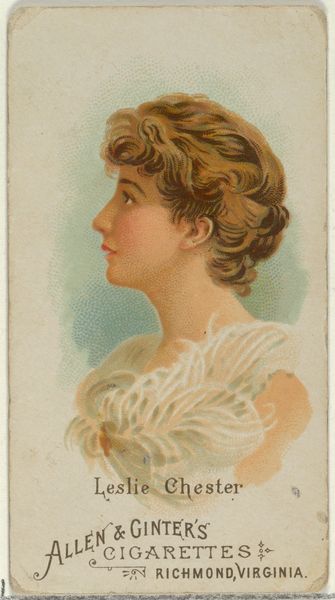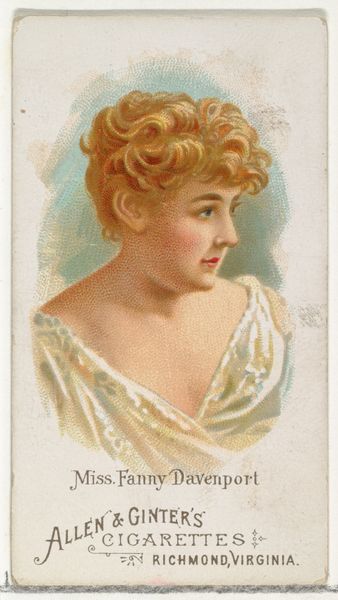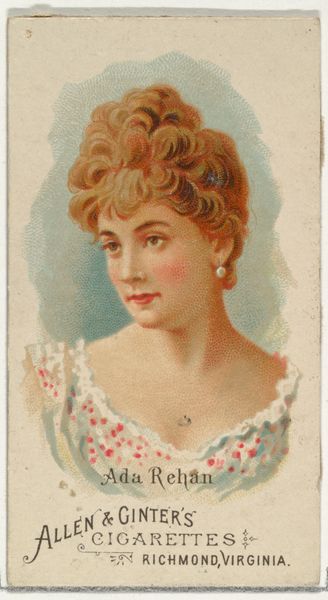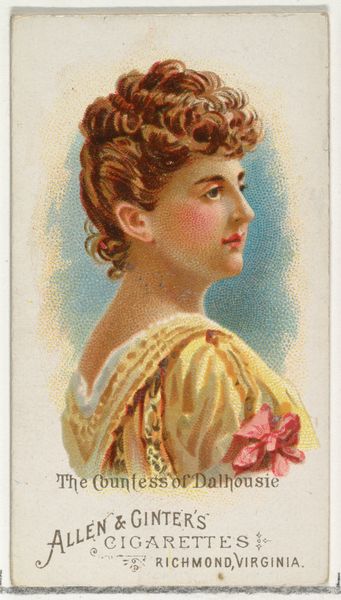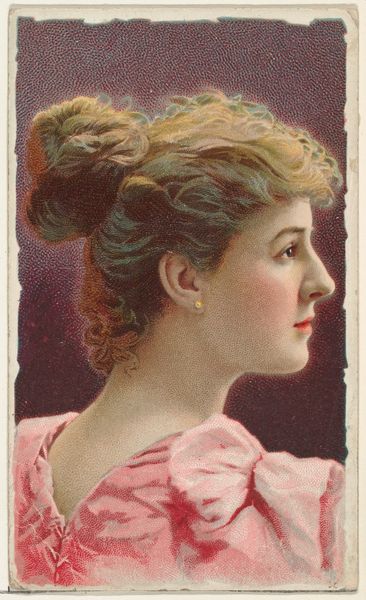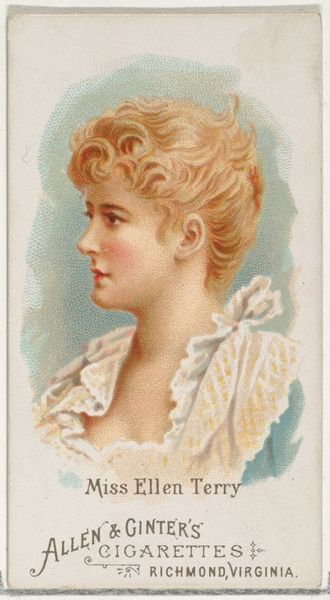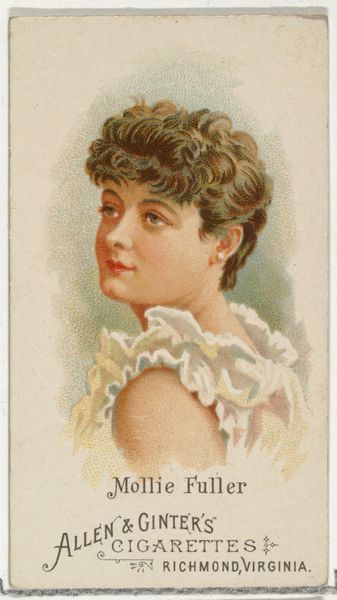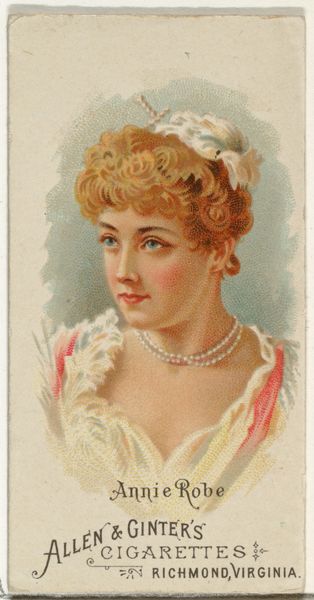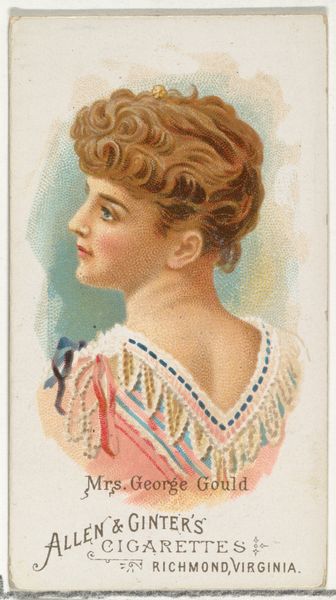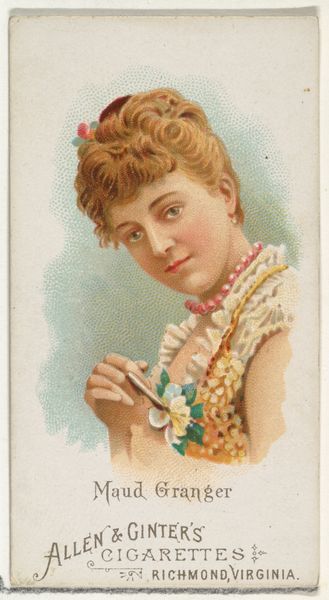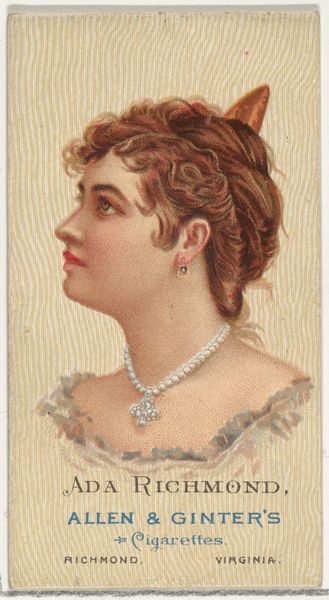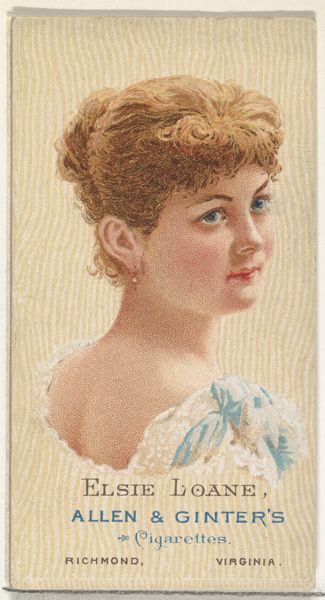
Marchioness of Kildare, from World's Beauties, Series 1 (N26) for Allen & Ginter Cigarettes 1888
0:00
0:00
drawing, lithograph, print
#
portrait
#
drawing
#
lithograph
# print
#
coloured pencil
Dimensions: Sheet: 2 3/4 x 1 1/2 in. (7 x 3.8 cm)
Copyright: Public Domain
Curator: Let's turn our attention to this curious little portrait, the Marchioness of Kildare, from the World's Beauties series, produced around 1888 by Allen & Ginter for their cigarettes. Editor: My initial impression? It's like a faded dream, a whisper of aristocracy amidst… tobacco advertising. The delicate pastel palette gives it this ephemeral, almost ethereal quality. Curator: Indeed. These cards were incredibly popular promotional items. Allen & Ginter, based in Richmond, Virginia, aimed to appeal to a burgeoning consumer culture, using imagery to associate their product with beauty, luxury, and, importantly, global reach. These small cards found their way into mass circulation. Editor: So, these images, lithographed on paper, were basically inserted into cigarette packs? It’s an intriguing clash – fine portraiture acting as a tiny, disposable token for a smoking habit. I am wondering about the labor and the materiality, it looks like there's use of coloured pencils too to achieve a softer aesthetic Curator: Exactly! The politics of image production were definitely at play. Allen & Ginter actively shaped perceptions, constructing and disseminating these idealized visions of women, power, and privilege, aligning their brand with those values, through consumer desire and marketing. Editor: Right, the mass production changing its social role and making a completely new one. I am also curious about the source of paper used and where did these pencils and colors come from? How much was dedicated to mass production of it? All these processes! Curator: What fascinates me is the circulation. The image of the Marchioness, likely viewed within specific elite circles, became democratized through mass production. It was available to anyone who purchased a pack of Allen & Ginter cigarettes. These images helped popularize beauty standards across socioeconomic boundaries, creating an aspirational link to this privileged life through something as mundane as cigarette consumption. Editor: And to circle back, considering how disposable this was, I'm now doubly intrigued by its preservation. Its fragility, its mass production, contrasted with its current place, the Metropolitan Museum. All those different lives it has, now displayed for analysis in an art museum. Curator: A testament to how our understanding of art continues to evolve. These everyday images reveal just as much about societal values and consumption habits as traditional fine art portraits might. Editor: Indeed, the object in itself is transformed into an archival piece—what has stayed from our world of consumption?
Comments
No comments
Be the first to comment and join the conversation on the ultimate creative platform.
